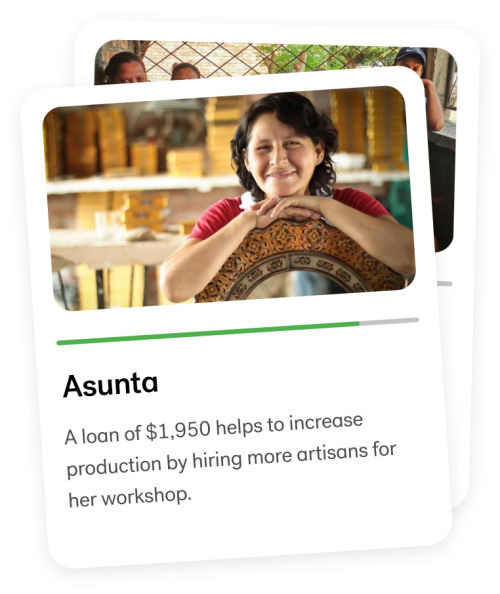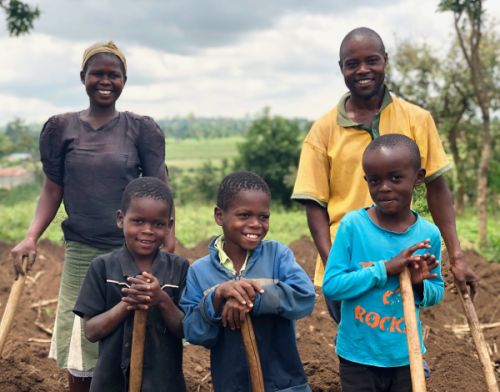Support causes you care about.
How Kiva works
Get started
Choose a borrower who inspires you or choose a cause you support.
Invest
Lend manually or automatically.
Get repaid
Kiva borrowers have a 96% repayment rate historically.
Repeat
Change more lives by relending your money over and over again.
100% of your loan goes to supporting borrowers.

Our community has funded over $2 billion in loans to more than 5 million people.

Kiva borrowers have a 96% repayment rate.

The Kiva community spans 77 countries and 1.9M lenders.

This morning I made microloans to a bakery in Samoa and a general store in Rwanda. I've been lending on Kiva since 2009 and I'm excited every time I get an email that I've received repayments and can make another loan.
Anna
KIVA LENDER

It's easy to make a difference in someone's life through Kiva. Just made my 11th loan to a single mother in Nicaragua. Constantly blown away by the impact from the same $25 being lent over and over again.
Jenae
Kiva lender
“Kiva’s ability to leverage the power of technology and compassion has produced an impressive record of impact that has helped millions of entrepreneurs around the world. PayPal is honored to be a long-time partner of Kiva as we work together to advance greater access to financial services and build a more inclusive economy.”
Franz Paasche Chief Corporate Affairs Officer at PayPal
Make a loan today!
Find a borrowerUnlock your organization's impact potential
Kiva partners with businesses and organizations to make an even greater impact on communities around the world, one loan at a time. Join Kiva to create a financially inclusive world, where all people hold the power to improve their lives.

